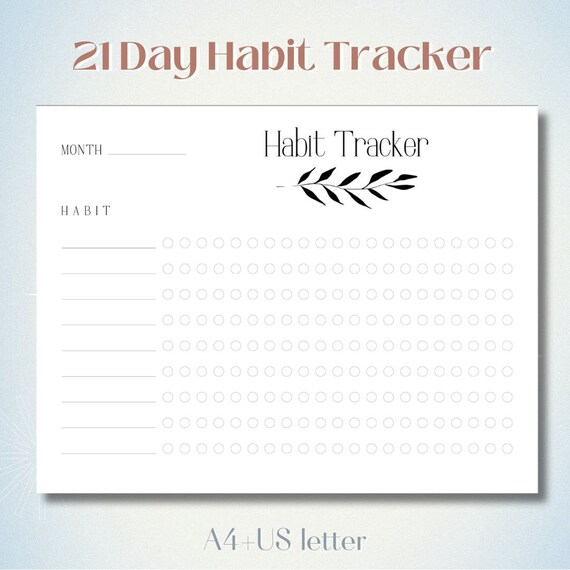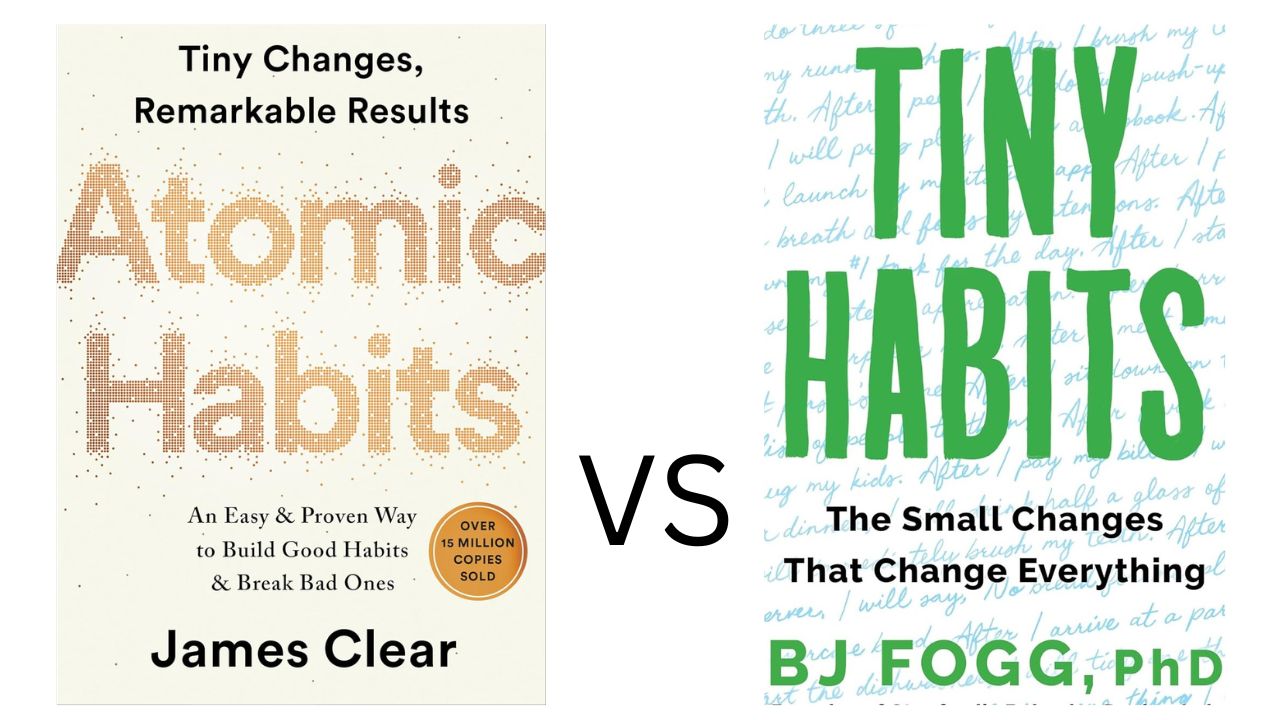Atomic Habits emphasizes incremental self-improvement while Tiny Habits focuses on simplicity and immediacy. Both books offer unique strategies for habit formation and change.
Exploring the nuances of effective habit formation has led to the creation of insightful methodologies like those discussed in “Atomic Habits” by James Clear and “Tiny Habits” by BJ Fogg. These bestselling books guide readers on a journey toward personal growth and behavioral change.
“Atomic Habits” provides a roadmap for building positive habits through small, cumulative changes, emphasizing the compound effects of daily routines. Contrastingly, “Tiny Habits” zeroes in on the power of tiny, easy-to-implement behaviors that can instantly become part of your life, bypassing the reliance on motivation and willpower. These approaches have been pivotal in helping countless individuals transform their lives, making both books cornerstones in the realm of personal development literature.
You may have read my other post related to popular book summary and review such as Ikigai, Miracle Morning, Eat That Frog, Rich Dad Poor Dad, Time Management, Dopamine Detox, The Four agreement book Summary etc.
Introduction To Mini-habits
Mini-habits are small steps that lead to big change. They are tiny behaviors we do every day. These habits can help us reach bigger goals in a simple and less daunting way. When people start with mini-habits, they build strong foundations for success.
The Power Of Small Changes
Small changes make a big impact over time. Mini-habits are like seeds that grow into healthy trees. They can change our lives in positive ways. We do not need to take big steps. Even the smallest actions can lead to great achievements.
- Easy to start and maintain
- Lead to consistent progress
- Build lasting change
Backdrop To The Atomic And Tiny Habits Phenomenon
Atomic Habits by James Clear and Tiny Habits by BJ Fogg show how mini-habits can transform lives. Both books share similar ideas on habit formation. They suggest starting with very small habits to improve every day.
| Atomic Habits | Tiny Habits |
|---|---|
| Focus on 1% improvements | Start with tiny behaviors |
| Build habits through four laws | Change through feeling good |
Both are research-backed and have helped many people create positive habits. They offer easy-to-follow steps to make lasting changes. The approach is to start so small that it’s almost too easy not to do it.

Credit: www.linkedin.com
Decoding Atomic Habits(Atomic Habits Vs Tiny Habits)
Atomic Habits by James Clear is more than a book. It’s a guide for those looking to make lasting changes. This book dives deep into the science of habits. Clear explains how small adjustments create big results over time.
James Clear’s Four Laws Of Behavior Change
Clear introduces a simple yet powerful framework:
- Make it obvious: Design your environment to highlight good habits.
- Make it attractive: Bundle habits with rewarding experiences.
- Make it easy: Reduce friction to form new behaviors.
- Make it satisfying: Use immediate rewards to reinforce good habits.
These laws are core to understanding how behaviors stick. They rely on small but mighty changes that accumulate over time.
Case Studies: Successes Of The Atomic Approach
Real-world examples showcase the power of Atomic Habits.
| Individual/Company | Challenge | Atomic Strategy | Outcome |
|---|---|---|---|
| Alex | Quit smoking | Replaced triggers | 1 year smoke-free |
| Bright Tech | Improve productivity | Optimized workspaces | 30% rise in output |
Stories from individuals and corporations highlight simple behavior changes. These lead to monumental gains. The Atomic Habit method proves effective for many.
Exploring Tiny Habits

Are you ready to make big changes with small steps? Exploring Tiny Habits unlocks this powerful approach.
Dr. Bj Fogg’s Behavior Model
Change starts with understanding how behaviors work. Dr. BJ Fogg, a behavior scientist from Stanford University, brings us the Behavior Model. This model explains that for a behavior to occur, three elements must converge at the same moment: Motivation, Ability, and Prompt. Tiny Habits focus on scaling back the behavior until it requires minimal motivation and ability, thus becoming easier to repeat.
- Motivation: Your desire to do the behavior
- Ability: How easy it is for you to do the behavior
- Prompt: A reminder to do the behavior
Real-world Impact Of Tiny Habits
Tiny Habits lead to real change. By starting small, these habits can grow and transform your life without overwhelming you. Here are few ways Tiny Habits create a ripple effect:
| Life Area | Examples of Tiny Habits |
|---|---|
| Health | After I pour my morning coffee, I will drink a glass of water. |
| Productivity | After I sit at my desk, I will open my to-do list. |
| Relationships | After I hear my kids come home, I will give them a hug. |
These small actions can lead to bigger, more consistent behaviors as they effortlessly become part of your daily routine.
Deep Dive Into Methods
In the quest for personal growth and increased productivity, “Atomic Habits” and “Tiny Habits” have emerged as frontrunners. Both methodologies break down habit-building into manageable chunks. Yet, the way they approach the habit loop differs. Let’s take a deep dive into these methods. We’ll explore the mechanics and psychology behind each. This will help us understand the nuances that could make or break your habit-formation journey.
Trigger, Routine, Reward: Battle Of Methodologies
The core cognitive sequence behind habit formation revolves around three elements: trigger, routine, and reward. “Atomic Habits” by James Clear emphasizes subtle changes. Clear frames triggers as cues that should be obvious, sparking routines that are easy. The reward should be satisfying, encouraging repeat behavior. Meanwhile, “Tiny Habits” by BJ Fogg focuses on simplicity. Here, triggers are initiators of routines so tiny they ensure success. Rewards manifest as instant positive emotions, reinforcing the habit.
| Element | Atomic Habits | Tiny Habits |
|---|---|---|
| Trigger | Clear, obvious cues | Small prompts for behavior |
| Routine | Simple routines; incremental improvement | Extremely tiny actions; easily achievable |
| Reward | Feelings of satisfaction; long-term benefits | Immediate positive emotions; quick wins |
Customization And Adaptability In Habit Formation
A key to habit success lies in customization and adaptability. “Atomic Habits” encourages readers to adapt habits to their lifestyles. This approach stresses the importance of personalization. The philosophy is flexible; it allows the habit to grow with you. “Tiny Habits,” on the other hand, starts with actions so small adaptation seems natural. It’s a method designed for virtually immediate integration into daily life. Each method understands that one size does not fit all in habit formation.
- Atomic Habits: Tailor habits to individual needs and situations
- Tiny Habits: Start with microscopic actions to bypass resistance
Comparative Analysis(Atomic Habits Vs Tiny Habits)
Atomic Habits and Tiny Habits are popular methods to build better habits. Each system offers unique approaches to habit formation. They help people make lasting changes. We will compare their strengths and weaknesses. We will also discuss how they fit with different personalities.
Strengths And Weaknesses Of Each System
Atomic Habits
- Focuses on small changes: It emphasizes tiny improvements daily.
- Provides a clear framework: It uses the 4 Laws of Behavior Change.
- Emphasizes consistency: It suggests habits should be part of your identity.
Weaknesses may include needing more time to see results. It could be challenging for those who seek quick changes.
| Factor | Atomic Habits | Tiny Habits |
|---|---|---|
| Focus | Incremental Change | Immediate Action |
| Structure | 4 Laws | 3 Steps |
| Consistency | Identity-based | Trigger-based |
Tiny Habits
- Emphasizes simplicity: It starts with very small habits.
- Offers immediate satisfaction: It uses instant rewards.
- Built around triggers: Habits are tied to existing routines.
Weaknesses may be less focus on long-term identity change. It might not address the underlying motivation as deeply.
Compatibility With Different Personalities
Atomic Habits
Best for those who:
- Enjoy structured systems.
- Are patience-driven.
- Focus on long-term goals.
Tiny Habits
Best for those who:
- Want quick wins.
- Prefer less structure.
- Are motivated by immediate rewards.
Both Atomic and Tiny Habits offer paths to change. But they suit different kinds of people. Some may like the strategic depth of Atomic Habits. Others may prefer the easy start of Tiny Habits. Choose a system that matches your personality. This way, you can form lasting habits with ease.

Credit: www.amazon.com
Practical Guide To Choosing Your Mini-habit Journey(Atomic Habits Vs Tiny Habits)
Embarking on the journey of self-improvement? Considering “Atomic Habits” by James Clear and “Tiny Habits” by BJ Fogg? Each book offers a unique approach to forming habits. This guide will help you find the mini-habit system that resonates with your life and goals.
Assessing Your Goals And Lifestyle
Your habits should fit your lifestyle, not clash with it. Start by jotting down your long-term goals. Are you aiming for productivity, health, or skill acquisition? This clear list will be your compass.
- Identify your current routines.
- Spot potential habit slots.
- Match habits to goals.
Remember, every individual’s day is different. Choose habits that blend seamlessly into your existing schedule.
Combining Elements For Personalized Success
Successful habit formation is not one-size-fits-all. Consider creating a mix that suits your personal needs.
| Aspect | Atomic Habits | Tiny Habits |
|---|---|---|
| Focus | Small improvements | Very tiny behaviors |
| Framework | 4 Laws of Behavior Change | ABC model (Anchor, Behavior, Celebration) |
| Customization | Build around existing habits | Start with existing routines |
Try a week with Atomic Habits, then a week with Tiny Habits. Note which system keeps you consistent. Mix elements from both to tailor your own mini-habit journey.

Credit: www.etsy.com
Looking For Best Habit Tracker Note Book?
Conclusion
Deciding between Atomic Habits and Tiny Habits isn’t a one-size-fits-all matter. Each approach offers unique strengths to habit formation and personal growth. Embrace the method that resonates with your lifestyle and goals. Ultimately, the best system is the one you can commit to consistently, leading to enduring positive change.
You may also read my following post:
If He Had Been With Me Summary
Its Kind of a Funny Story Book
It Didn’t Start with You Summary
Who Moved My Cheese: Review, Analyses and Summary.
The Way I used To Be Summary by Amber Smith (Author)
How It Feels To Float Summary By Helena Fox
The Silent Patient Summary By Alex Michaelides
Archer’s Voice Summary By Mia SheridanA Thousand Boy Kisses Summary By Tillie Cole

